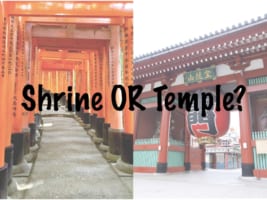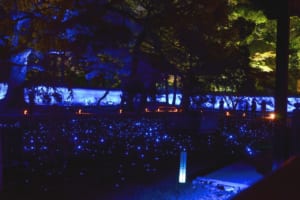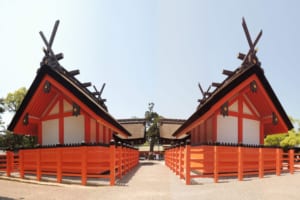Kyoto Shrine Guide: Best Shrines to Visit in Kyoto
Most Beautiful Shrines in Kyoto: Fushimi Inari Taisha, Heian Shrine and more
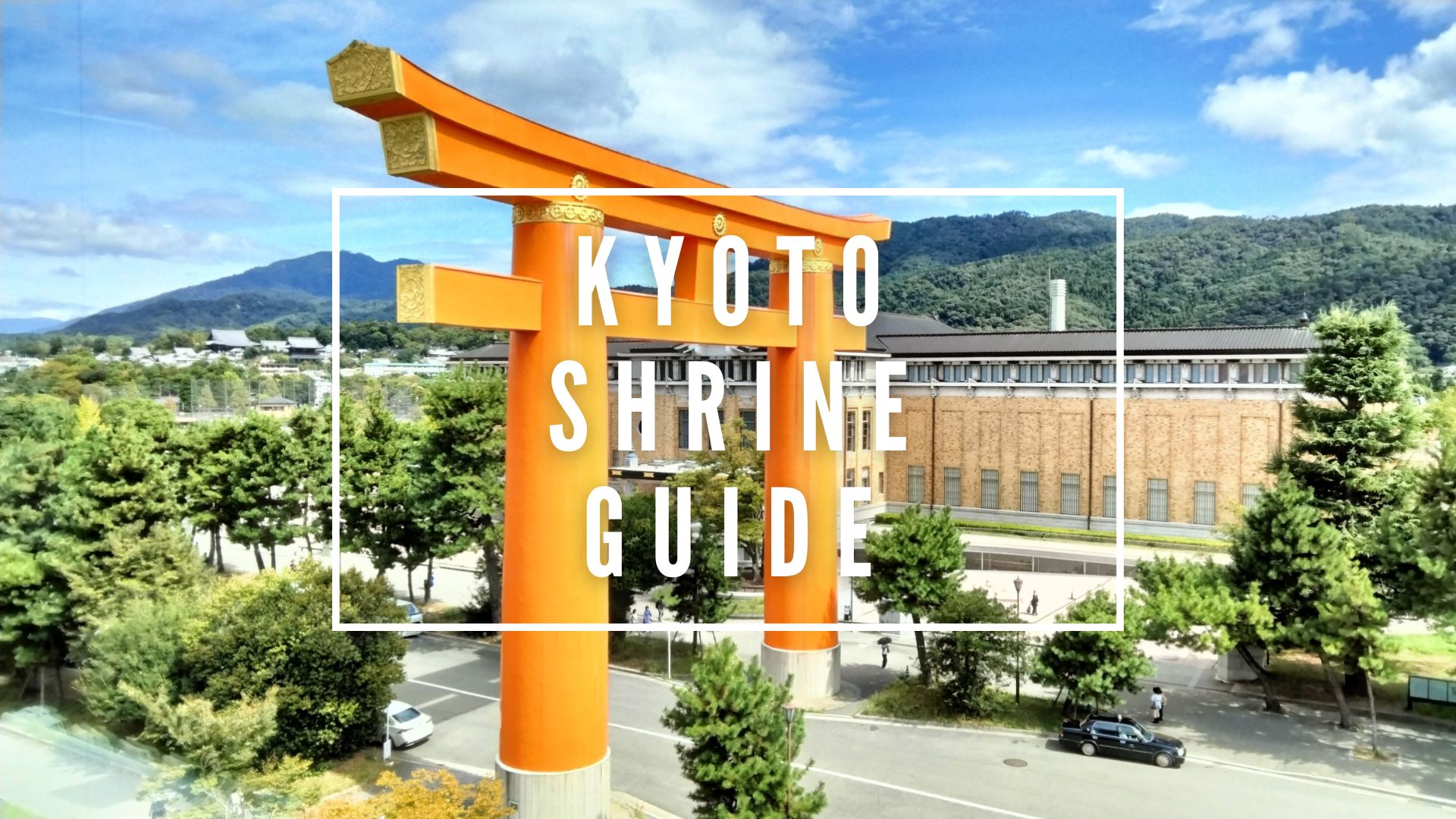
Kyoto, the heart of Japan’s cultural heritage, is home to an array of ancient shrines, each one with its own history and spiritual significance. From the thousands of vermilion torii gates at Fushimi Inari Taisha to the peaceful grounds of Shimogamo Shrine, these sacred sites offer a glimpse into Japan’s religious heritage and architectural ingenuity.
While visiting them, you can explore architectural marvels, participate in timeless festivals, and immerse in the beauty of these spiritual sanctuaries. Each shrine tells a unique story of devotion, artistry, and community, and Kyoto’s history make it a prime destination for those seeking to experience some of the best shrines that Japan has to offer.
So if you need help to narrow down what are the Shrines that you definitely shouldn’t miss, you’re at the right place!
Check also: Kyoto Temple Guide: Best Temples to Visit in Kyoto
1. Kifune Shrine
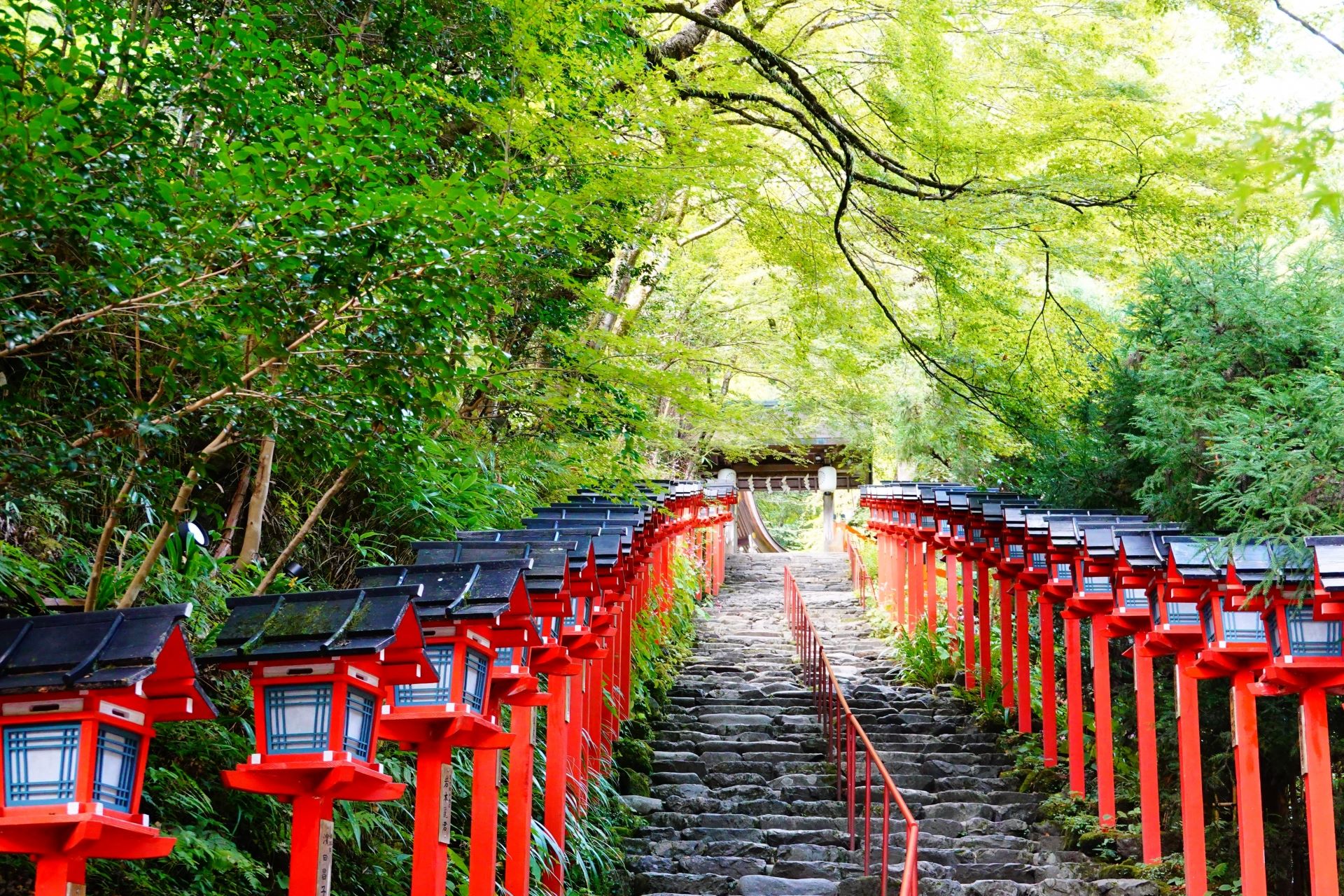 Kifune Shrine (貴船神社), nestled in Kyoto’s mountainous area, is a revered site dedicated to the kami of water. Believed to have been established over 1,300 years ago, the shrine comprises three structures: the Main Shrine, Yui no Yashiro, and Okunomiya. It’s famed for its picturesque approach, marked by a stone staircase lined with red lanterns.
Kifune Shrine (貴船神社), nestled in Kyoto’s mountainous area, is a revered site dedicated to the kami of water. Believed to have been established over 1,300 years ago, the shrine comprises three structures: the Main Shrine, Yui no Yashiro, and Okunomiya. It’s famed for its picturesque approach, marked by a stone staircase lined with red lanterns.
The shrine is known for unique practices such as mizuura mikuji, where fortunes are revealed by water-soaked papers. Its connection to water and its impact on agriculture and daily life is celebrated throughout the year with various rituals, including the popular Kifune Water Festival. Surrounded by lush scenery that transforms spectacularly with the seasons, Kifune attracts both locals and tourists seeking blessings and peace.
More info: Kifune Shrine: New Travel Destination in Kyoto
2. Heian Shrine
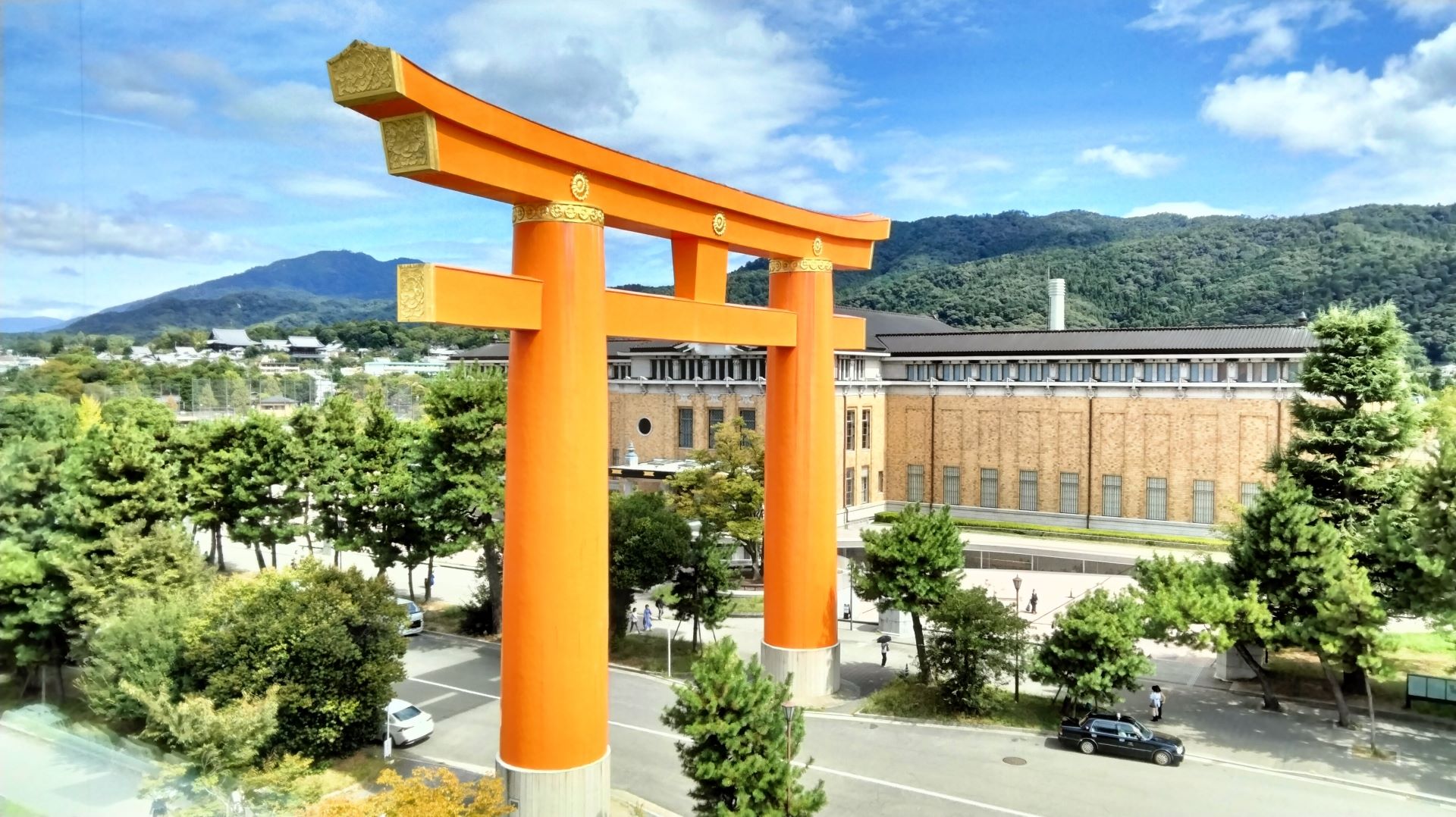 Heian Shrine (平安神宮), a notable cultural landmark in Kyoto, celebrates the city’s ancient past and its emperors. Constructed in 1895, this shrine is a scaled replica of the original Imperial Palace, symbolizing the Heian period’s splendor. Recognized for its massive torii gate, Heian Shrine features a stunning red architecture and a sprawling garden famous for its late-blooming weeping cherry trees, making it a favored spot for cherry blossom viewing in spring.
Heian Shrine (平安神宮), a notable cultural landmark in Kyoto, celebrates the city’s ancient past and its emperors. Constructed in 1895, this shrine is a scaled replica of the original Imperial Palace, symbolizing the Heian period’s splendor. Recognized for its massive torii gate, Heian Shrine features a stunning red architecture and a sprawling garden famous for its late-blooming weeping cherry trees, making it a favored spot for cherry blossom viewing in spring.
The shrine hosts the Jidai Matsuri, one of Kyoto’s grandest festivals, showcasing historical costumes and cultural heritage. It serves as a popular venue for Shinto weddings and cultural events, offering a blend of tradition and community activities that attract both locals and tourists alike.
More info: Heian Shrine: Kyoto’s Best Weeping Cherry Blossom Spot
3. Fushimi Inari Taisha
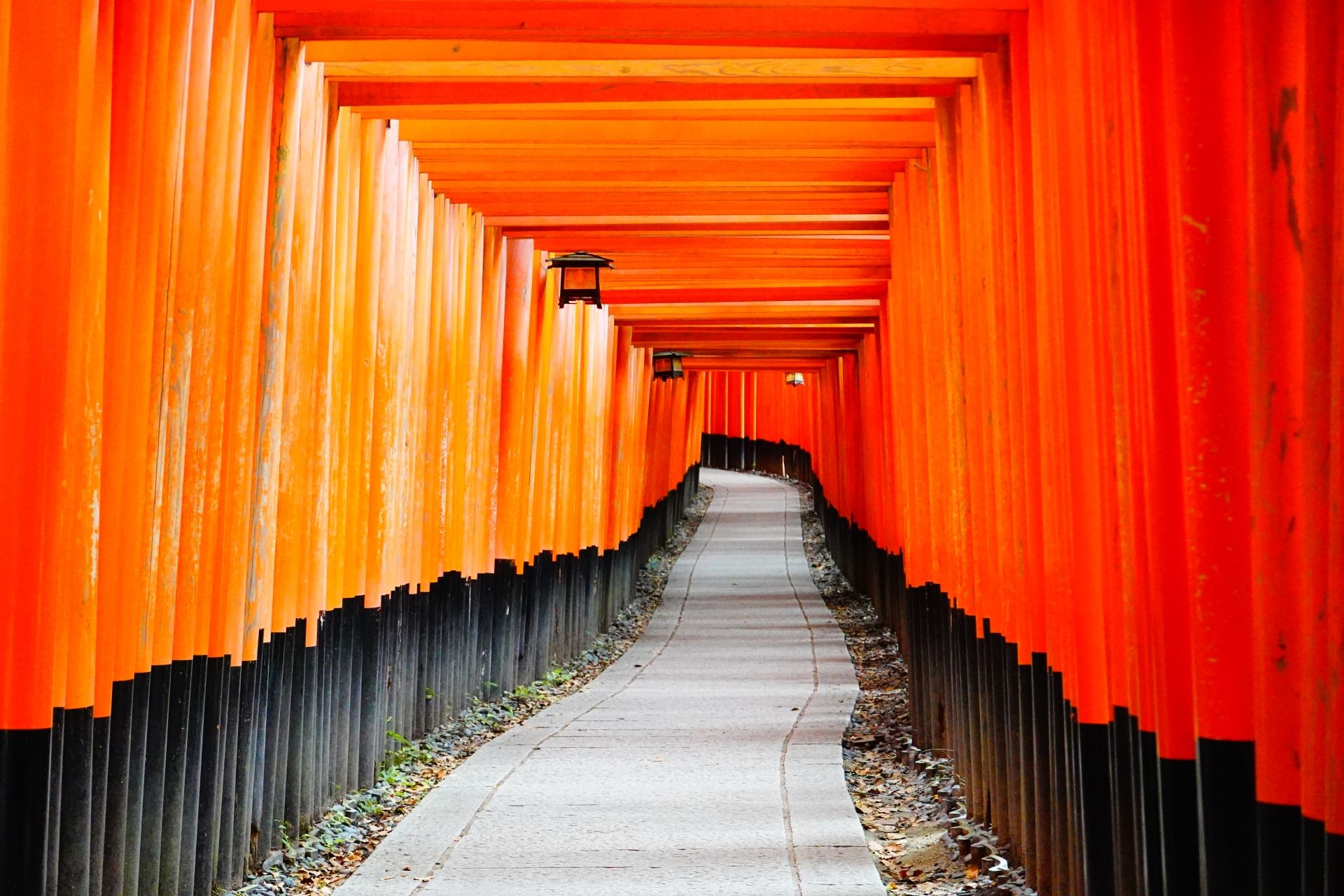 Fushimi Inari Taisha (伏見稲荷大社), established in 711 AD, is the most important shrine dedicated to Inari, the Shinto god of rice and commerce. Known for its iconic “Senbon Torii,” the thousands of vermilion torii gates that create pathways on the sacred Mount Inari, this shrine is a top destination in Kyoto. Each gate, funded by donations from businesses seeking blessings for prosperity, bears the donor’s name.
Fushimi Inari Taisha (伏見稲荷大社), established in 711 AD, is the most important shrine dedicated to Inari, the Shinto god of rice and commerce. Known for its iconic “Senbon Torii,” the thousands of vermilion torii gates that create pathways on the sacred Mount Inari, this shrine is a top destination in Kyoto. Each gate, funded by donations from businesses seeking blessings for prosperity, bears the donor’s name.
The shrine complex sprawls across the mountain and includes numerous sub-shrines, making it a vast site of worship and hiking, with trails leading up to scenic viewpoints over Kyoto. Fushimi Inari Taisha, in addition to being a religious site, is also a cultural icon, deeply intertwined with Japan’s agricultural traditions and business prosperity.
More info: Fushimi Inari Taisha: Kyoto’s Most Visited Shrine
4. Yasaka Shrine
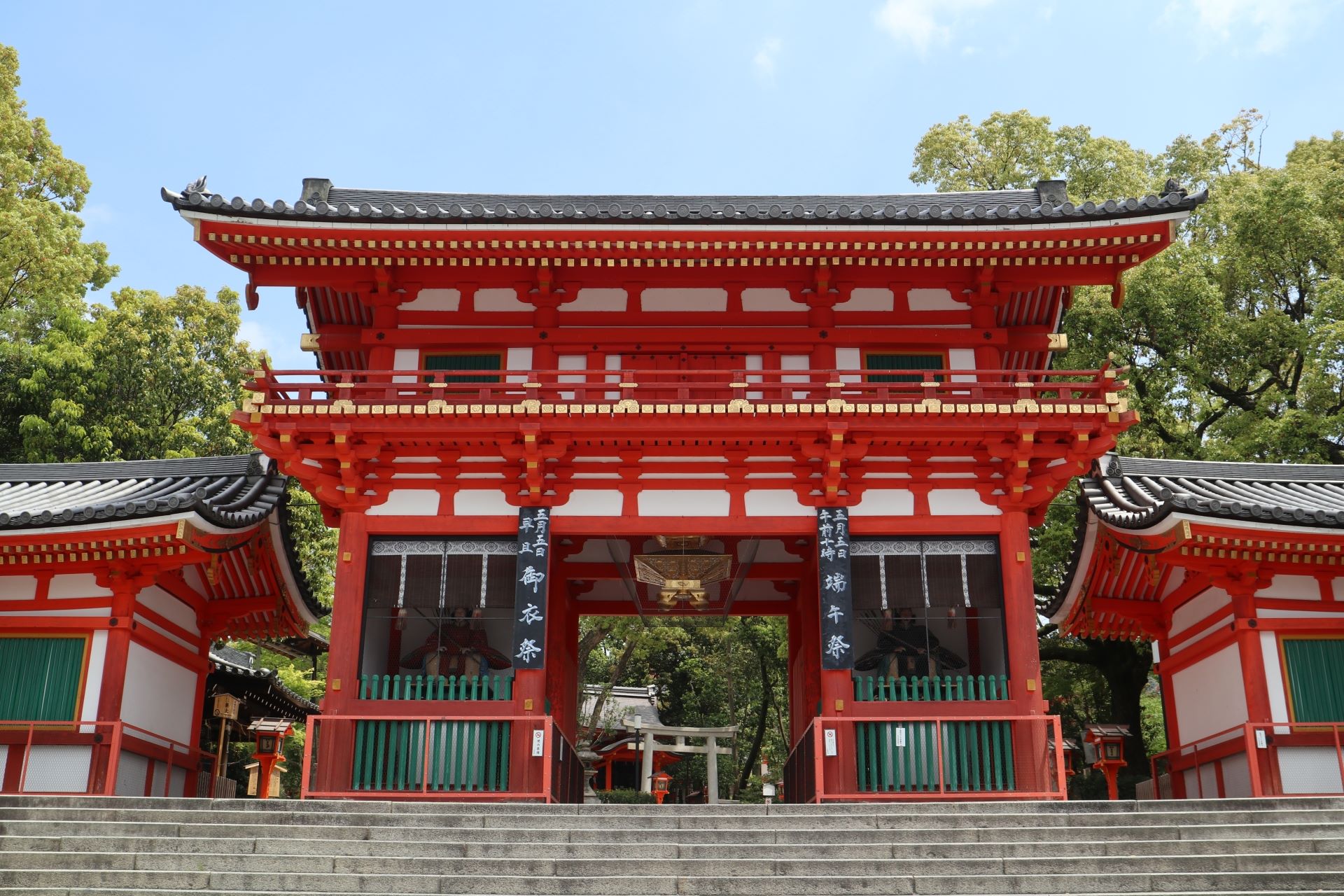 Yasaka Shrine (八坂神社), also known as Gion Shrine, is a historic Shinto shrine in Kyoto established in 656. It is renowned for hosting the Gion Matsuri, Japan’s most famous festival. This event transforms the shrine into a vibrant hub of activity every July, celebrating Japanese culture with elaborate floats and traditional music. The shrine features a unique architectural style known as Gion Zukuri, and its main hall was rebuilt in 1654.
Yasaka Shrine (八坂神社), also known as Gion Shrine, is a historic Shinto shrine in Kyoto established in 656. It is renowned for hosting the Gion Matsuri, Japan’s most famous festival. This event transforms the shrine into a vibrant hub of activity every July, celebrating Japanese culture with elaborate floats and traditional music. The shrine features a unique architectural style known as Gion Zukuri, and its main hall was rebuilt in 1654.
Located at the entrance to Maruyama Park, Yasaka Shrine is also a popular destination during cherry blossom season, where visitors can enjoy stunning night views of illuminated cherry trees. The shrine serves as a cultural landmark and a spiritual site for warding off bad luck, attracting countless visitors throughout the year.
Information
 Access Access |
9-min walk from Gion-Shijo Station |
|---|---|
 Official Website Official Website |
http://www.yasaka-jinja.or.jp/ |
5. Hirano Shrine
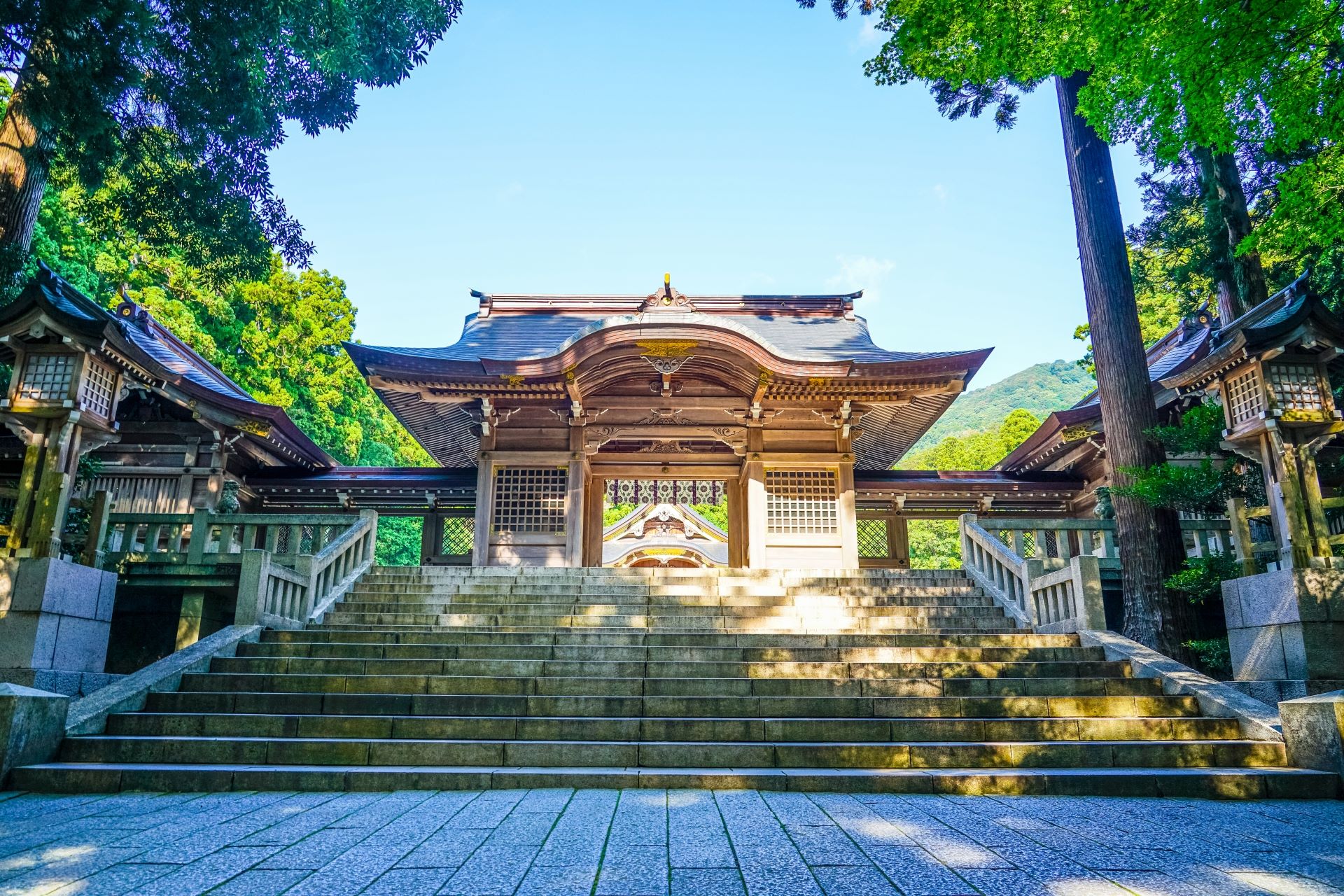 Established in 794, Hirano Shrine (平野神社) is famous for its extensive cherry blossom gardens, featuring over 400 trees from 60 different varieties. The shrine has a long-standing connection with Japan’s imperial family and is known for its annual cherry blossom festival, which dates back to 985.
Established in 794, Hirano Shrine (平野神社) is famous for its extensive cherry blossom gardens, featuring over 400 trees from 60 different varieties. The shrine has a long-standing connection with Japan’s imperial family and is known for its annual cherry blossom festival, which dates back to 985.
This festival not only showcases the stunning floral beauty but also includes a historic procession, enhancing the cultural experience. Located in northwest Kyoto, Hirano Shrine is a celebrated spot for both daytime and nighttime cherry blossom viewing, providing a picturesque setting that combines natural beauty with historical significance.
Information
 Access Access |
8-min walk from Kitano Hakubai-Cho Station |
|---|---|
 Official Website Official Website |
https://www.hiranojinja.com/ |
6. Kitano Tenmangu Shrine
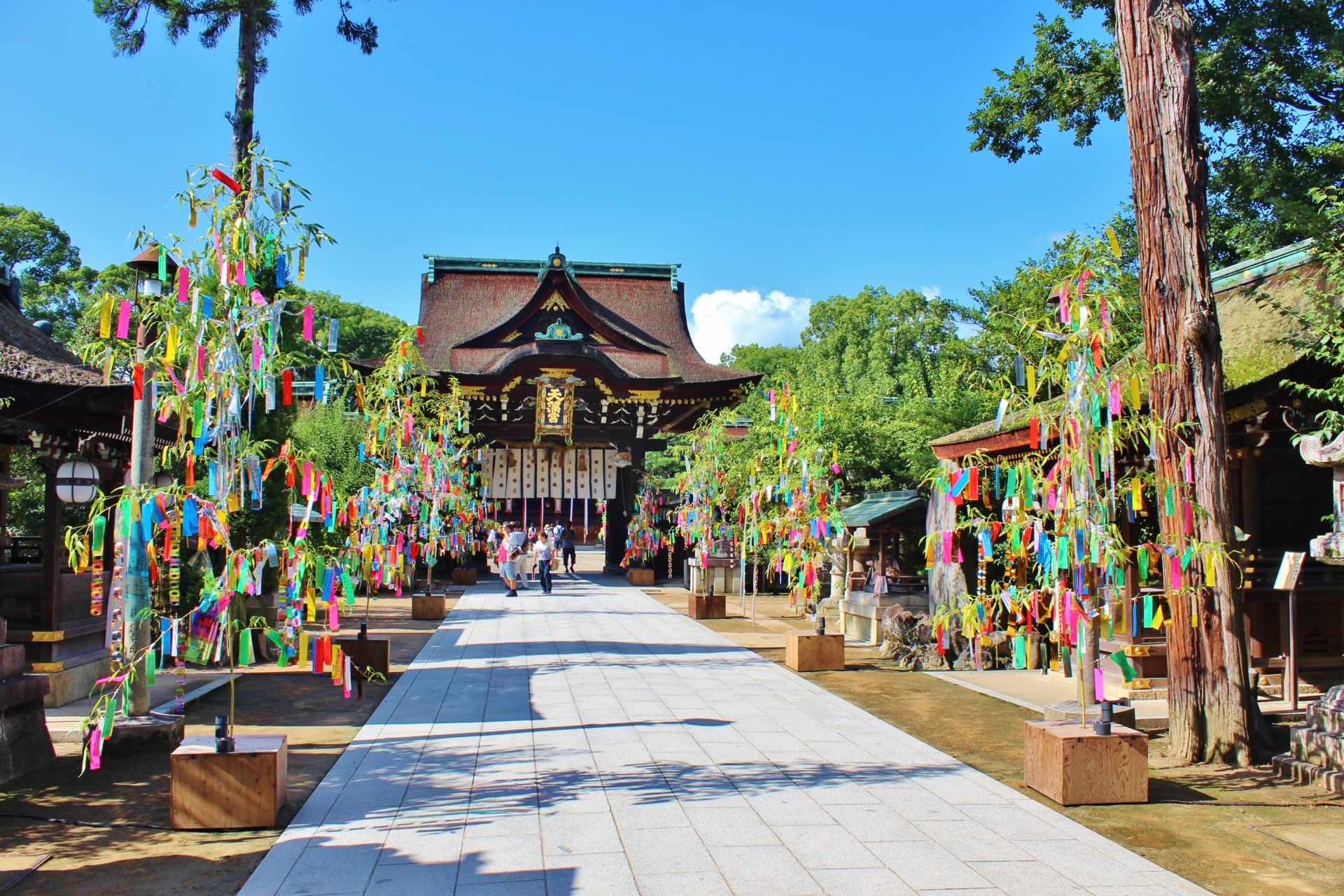 Kitano Tenmangu Shrine (北野天満宮), founded in 947, is dedicated to Sugawara no Michizane, the deity of learning. It is a pivotal site for students praying for academic success. The shrine is architecturally notable for its yatsumune-zukuri style, and it houses a significant collection of plum trees, Michizane’s favorite, which blossom spectacularly in early spring.
Kitano Tenmangu Shrine (北野天満宮), founded in 947, is dedicated to Sugawara no Michizane, the deity of learning. It is a pivotal site for students praying for academic success. The shrine is architecturally notable for its yatsumune-zukuri style, and it houses a significant collection of plum trees, Michizane’s favorite, which blossom spectacularly in early spring.
The shrine also hosts a monthly flea market and a special plum blossom festival, where tea ceremonies are performed by geiko and maiko. Kitano Tenmangu’s cultural and educational significance, coupled with its soothing environment, makes it a must-visit destination in Kyoto for both spiritual enrichment and historical exploration.
Information
 Access Access |
7-min walk from Kitano Hakubai-Cho Station |
|---|---|
 Official Website Official Website |
https://www.kitanotenmangu.or.jp/ |
7. Kamigamo Shrine
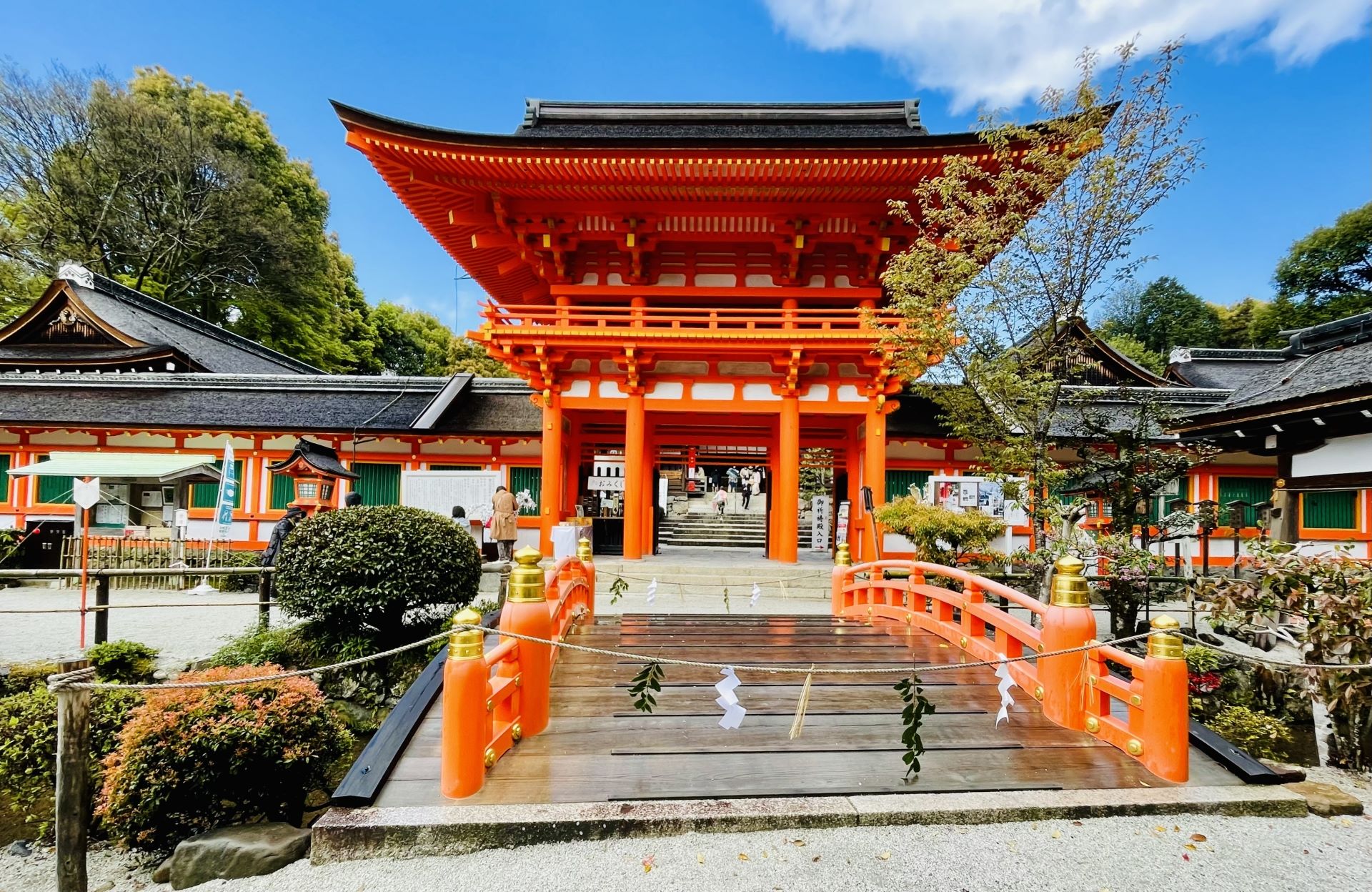 Kamigamo Shrine (上賀茂神社), officially known as Kamo Wakeikazuchi Jinja, is one of Kyoto’s oldest Shinto shrines, originally established in 678. It’s a designated UNESCO World Heritage site as part of the Historic Monuments of Ancient Kyoto. The shrine is famed for its Aoi Matsuri, one of Kyoto’s three major festivals held annually on May 15. This festival is known for its parade of people in Heian period costumes and its horse races, reflecting the shrine’s historical connection to imperial patronage and rituals.
Kamigamo Shrine (上賀茂神社), officially known as Kamo Wakeikazuchi Jinja, is one of Kyoto’s oldest Shinto shrines, originally established in 678. It’s a designated UNESCO World Heritage site as part of the Historic Monuments of Ancient Kyoto. The shrine is famed for its Aoi Matsuri, one of Kyoto’s three major festivals held annually on May 15. This festival is known for its parade of people in Heian period costumes and its horse races, reflecting the shrine’s historical connection to imperial patronage and rituals.
Kamigamo Shrine is nestled on the banks of the Kamo River, surrounded by a pristine environment that includes a unique feature of two sand cones, known as tatesuna, symbolizing purity and renewal. The shrine complex is a cultural treasure, featuring architecture that is complemented by the surrounding landscape, inviting peace and reverence.
8. Shimogamo Shrine
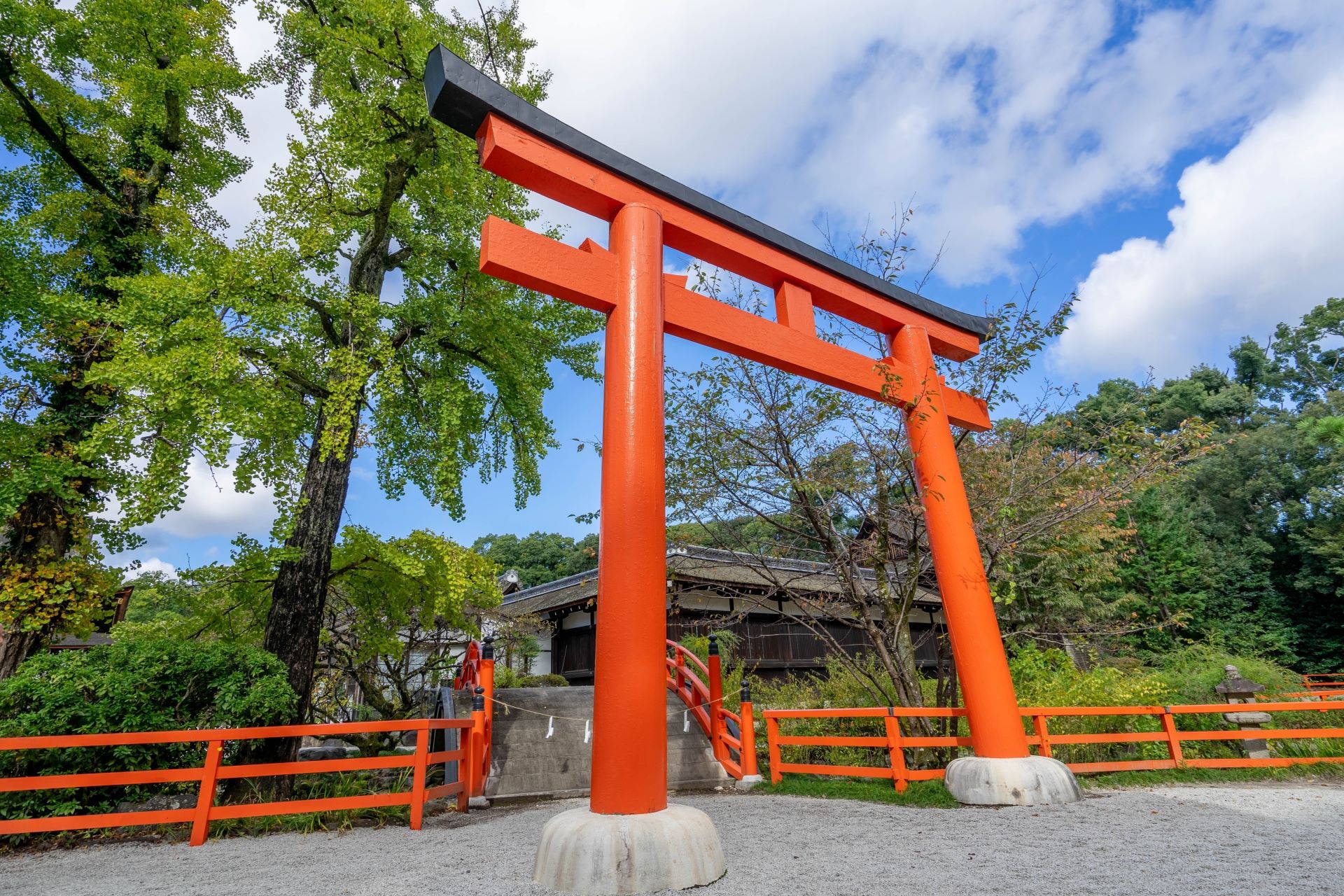 Shimogamo Shrine (下鴨神社), together with Kamigamo Shrine, forms part of the Kamo Shrines, which are among the oldest Shinto sites in Japan, with origins tracing back to the 6th century. Located at the confluence of the Takano and Kamo rivers, it is surrounded by the ancient forest of Tadasu no Mori, a UNESCO World Heritage site. The shrine is dedicated to Tamayorihime and her father, Kamotaketsunumi no Mikoto, deities associated with harmony and prosperity.
Shimogamo Shrine (下鴨神社), together with Kamigamo Shrine, forms part of the Kamo Shrines, which are among the oldest Shinto sites in Japan, with origins tracing back to the 6th century. Located at the confluence of the Takano and Kamo rivers, it is surrounded by the ancient forest of Tadasu no Mori, a UNESCO World Heritage site. The shrine is dedicated to Tamayorihime and her father, Kamotaketsunumi no Mikoto, deities associated with harmony and prosperity.
Shimogamo is renowned for hosting the Aoi Matsuri every May 15th, a spectacular festival that showcases a procession from the Imperial Palace to the shrine, celebrating the season’s new growth with elaborate rituals and traditional dress. The shrine’s architectural elements, such as the striking vermilion gates and the iconic taikobashi bridge over the Mitarashi stream, add to the serene and historic atmosphere, making it a spiritual and cultural haven in Kyoto.
Information
 Access Access |
11-min walk from Mototanaka Station |
|---|---|
 Official Website Official Website |
http://www.shimogamo-jinja.or.jp/ |
▽Subscribe to our free news magazine!▽
For more information about traveling in Japan, check these articles below, too!
▽Related Articles▽
▼Editor’s Picks▼
Written by
Photographer, journalist, and avid urban cyclist, making sense of Japan since 2017. I was born in Caracas and lived for 14 years in Barcelona before moving to Tokyo. Currently working towards my goal of visiting every prefecture in Japan, I hope to share with readers the everlasting joy of discovery and the neverending urge to keep exploring.





